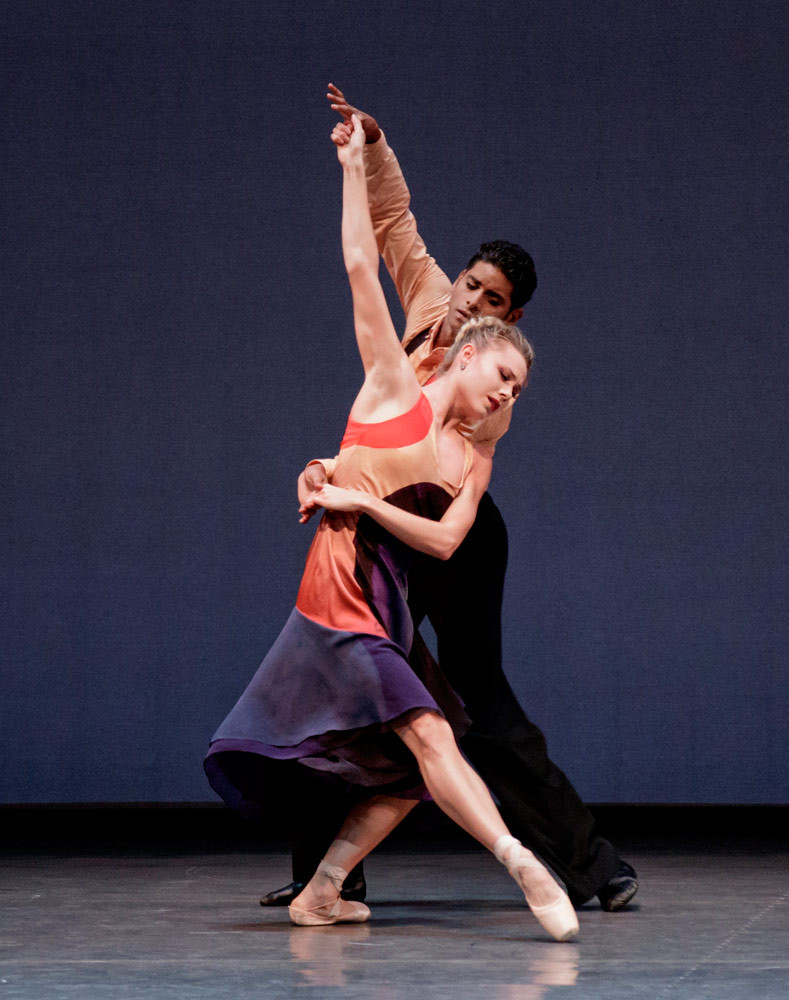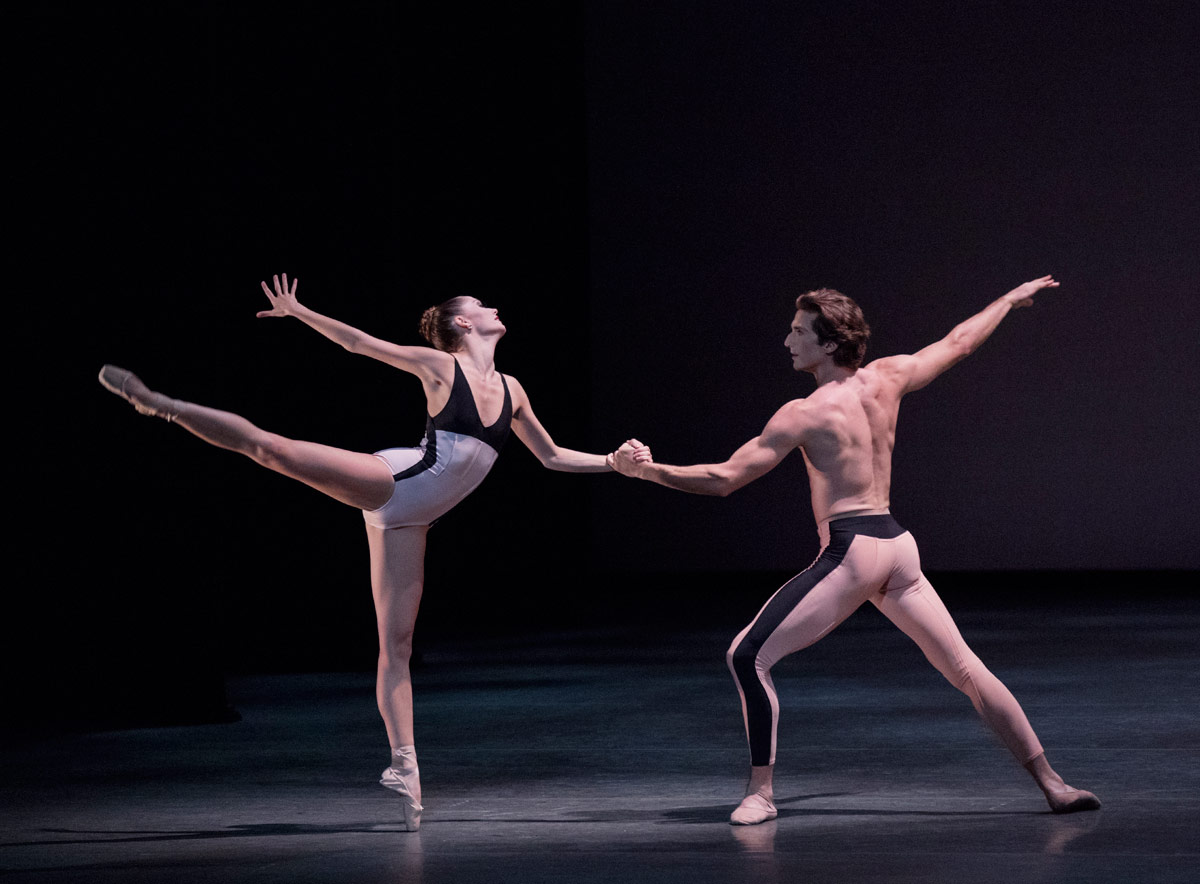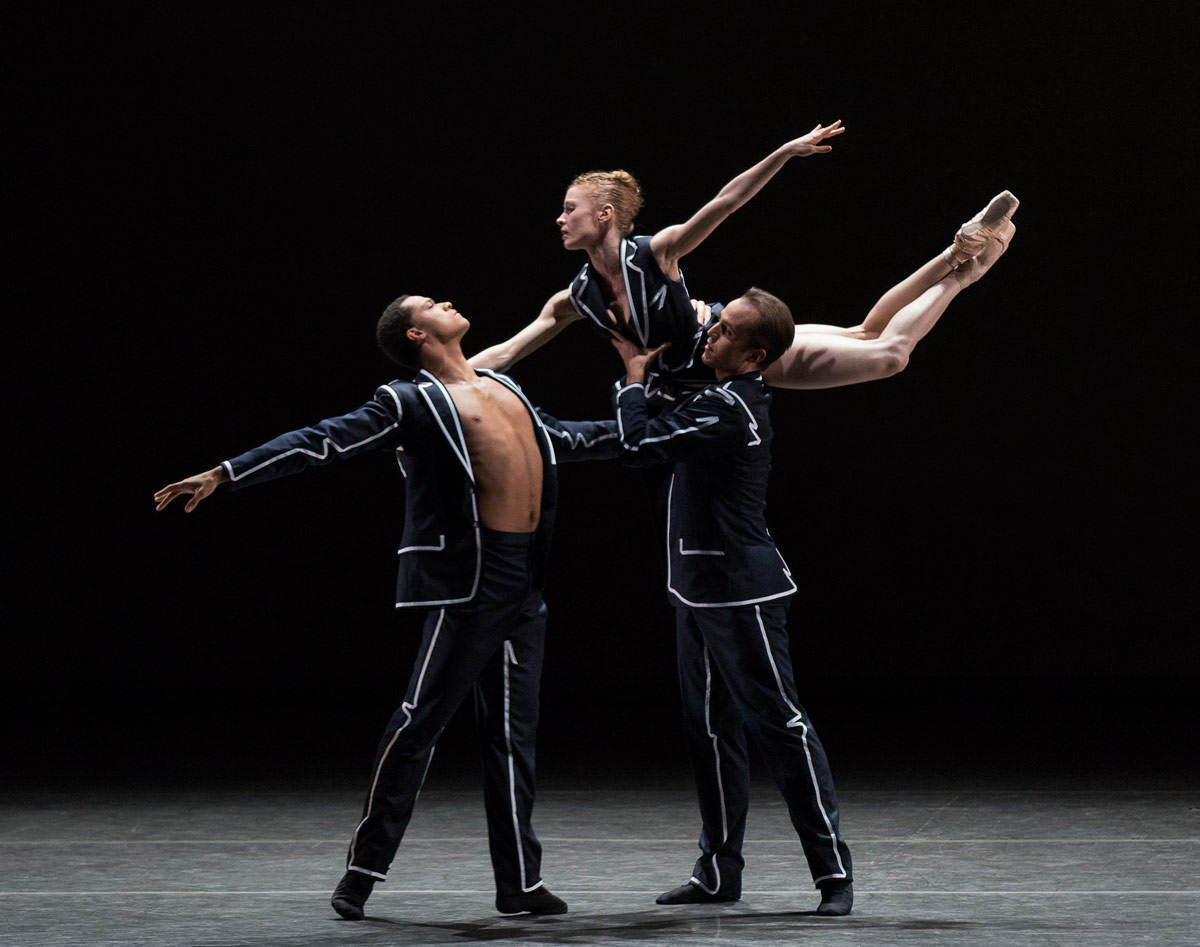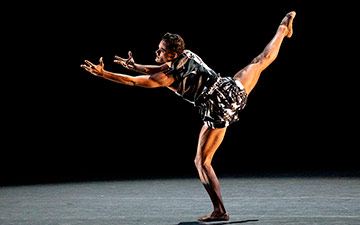
© Paul Kolnik. (Click image for larger version)
New York City Ballet
Fall Gala: For Clara, The Dreamers, Ten in Seven, Unframed, Bal de Couture
★★★✰✰
New York, David H. Koch Theater
20 September 2016
www.nycballet.com
davidhkochtheater.com
All Dressed Up
Five years after Sarah Jessica Parker (a member of the board) came up with the idea, New York City Ballet’s Fall Fashion Gala seems firmly ensconced in the ballet calendar. Though it has produced few lasting ballets, and even fewer memorable costumes, it never fails to bring in the well-heeled crowds and, presumably, to fill the company coffers. The pattern is set: the company commissions works from three or four choreographers, often quite young, and pairs them with prominent designers. The works are short, and are introduced by filmlets that reveal the petite histoire behind the designs and extol the (abundant) virtues of the costume department, and, in particular, of its director, Marc Happel. His wry sense of humor makes all this tolerable.
If, at these galas, the ballets never feel like the main event, well, that’s just how it goes. This time there were four new pieces. Three were by choreographers working with the company for the first time: Lauren Lovette, Peter Walker and Annabelle Lopez Ochoa. The fourth was by a familiar name, Justin Peck. Peter Martins’s inocuous Bal de Couture, more of a grand défilé than a ballet, closed the show. (The bulbous Valentino tutus are as lampshade-like as ever.) First the good news: two of the ballets were by women, a healthy corrective to the male dominance characteristic of the higher echelons of ballet-dom. And three were by current company-members, a welcome sign that talent is being encouraged from within.

© Paul Kolnik. (Click image for larger version)
The not-so-good news is that none of the ballets was a knockout; there was no Concerto DSCH or Year of the Rabbit. At no moment did one think: this is a ballet I need to see again and again, to understand its every nuance, to bask in its atmosphere. Strangely, most of the works revealed little about the choreographers who made them, other than that they know a lot of steps and are more than capable of putting them together in ingenious ways. In fact, the evening felt rather over-filled with clever, difficult steps, executed with enormous panache and energy by the dancers. Such attack! Such precision and speed! It’s almost as if the choreographers were so eager to show everything the dancers can do, they forgot that there should be an idea behind the movement.
This was especially true of Justin Peck’s The Dreamers, an impossibly difficult pas de deux for Sara Mearns and Amar Ramasar set to a piano quintet (No. 2) by Bohuslav Martinů. The handsome costumes – a sheath in saturated colors for Mearns and wide-trousered suit for Ramasar, both by Dries Van Noten – suggested a real-life, well-dressed couple, rather than a pair of dancers. But the choreography, full of scrolling motion and shooting legs and lifts in which Mearns was flipped over in the air, never blossomed into something more than a maelstrom of movement. Peck, who is immensely talented at moving groups of people in interesting ways, still hasn’t cracked the mystery of the pas de deux, though he’s clearly working at it. Mearns and Ramasar were impressive, but that we knew already.

© Paul Kolnik. (Click image for larger version)
Lauren Lovette’s For Clara, which opened the evening, was a paean to freedom, embodied onstage by the dancer Indiana Woodward, perhaps a stand-in for the choreographer herself. (At one point she is lifted by the whole group, and hovers there, like the Lilac Fairy.) Woodward, by the way, wins the award for most-valued-player of the evening; her dancing in both this ballet and Peter Walker’s Ten In Seven was fresh, open, exhilarated.
Lovette has a knack for creating partnering sequences, particularly evident in a turbulent – even combative – pas de deux for Zachary Catazaro and Unity Phelan. He tossed her into the air, catching her in a straddle. Impressive! Otherwise, Lovette seems to be more inspired by the women, who burst forth with force and joy. The costumes, by Narciso Rodriguez, were simple, almost like an updated version of Balanchine’s light tunics from Concerto Barocco, with pale tights and bare chests for the men. The corps wore longer gauzy dresses in black. But the ballet is a jumble of ideas, in part because the music to which it is set, Robert Schumann’s “Introduction and Concert-Allegro,” jumps from mood to mood. There is too much going on, all the time.

© Paul Kolnik. (Click image for larger version)
From what I’ve seen of Annabelle Lopez Ochoa’s work, Unframed appears to be something of a departure, more classically-inclined and far less quirky than her usual style. Here, the costumes, by Rosie Assoulin, were an important feature of the dance: tailored suits for men and women, accessorized with squiggly white lines. The women kept tugging at their jackets, as if to underline a point. The dance felt like a collage, like its score, which combines music by Baroque, Romantic, and contemporary composers. The most convincing section was a pseudo-Baroque dance for the men, accessorized with dainty flourishes. By the end of Unframed, everyone had stripped down to black briefs, with halter-tops for the women. The women’s hair was loose – Sterling Hyltin’s cascading blonde mane made a particular impression. Perhaps this was meant to denote a sense of freedom or abandon, but without any buildup to explain the transformation, it felt like an empty effect.

© Paul Kolnik. (Click image for larger version)
As sometimes happens, the most original ideas came from the least talked-about choreographer, Peter Walker, a member of the corps de ballet. On the surface, Ten in Seven, set to a jazzy, electric-guitar-heavy score by Thomas Kikta – father of Emily Kikta, who danced in the piece – was the least sophisticated of the four new works. There were fewer clever combinations of steps or ingenious lifts; the patterns were straightforward, the sections divided by blackouts. The feel was light, even pop. But the ballet felt more personal, and more heartfelt, than anything else on the program. Four musicians (guitar, percussion, piano, trumpet) played atop a series of platforms connected by a staircase. Rhythm ruled; the piece started with the dancers clapping out rhythms. The women were in soft slippers, which made them look free, unencumbered. There was a sense of play and competition, interspersed with a hint of social dancing. The dancers paired off like couples at a backyard dance. The summery frocks, by Jason Wu – who has dressed Michelle Obama on more than one occasion – were flirty and flattering. It was warm and, yes, probably more appropriate for a smaller, more intimate company (and stage). But there was something there. And it wasn’t just about the dresses.

















A breezy read as Marina Harss undresses the Fashion Gala. Well done!